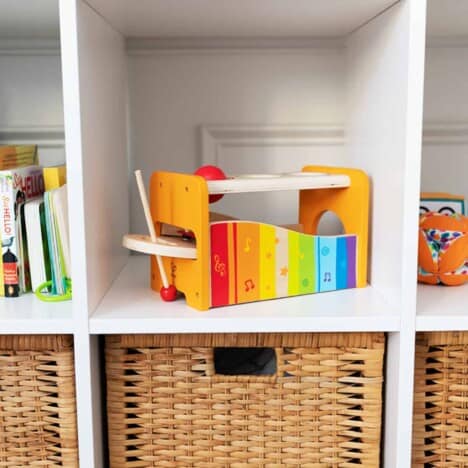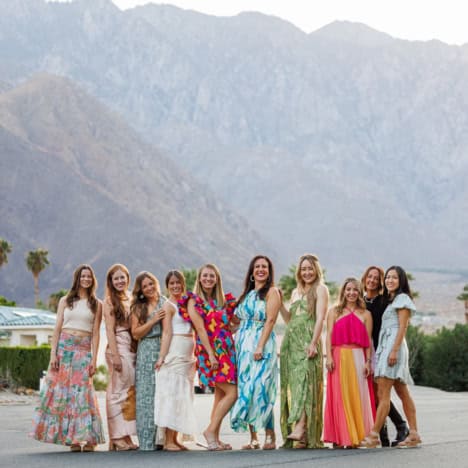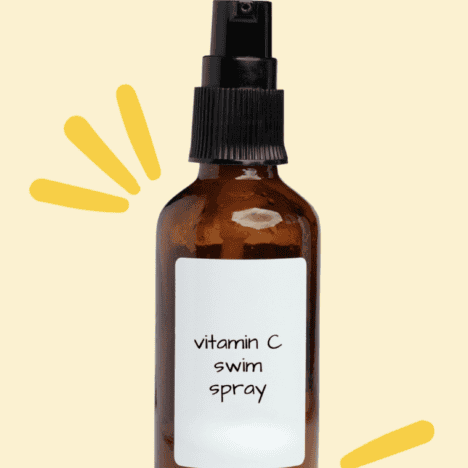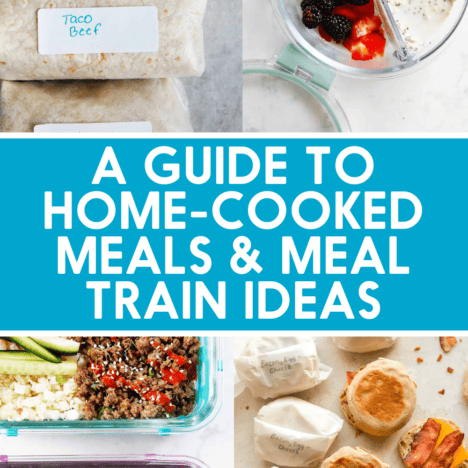This post may contain affiliate links. Please read my disclosure policy.
Non-toxic baby toys: why it matters, what to avoid, what to look for, and how to have some balance with it all!
I’ve been a mama for a little over a year now, and one of my favorite things about taking on the role has been watching Skylar play and interact with the world around her. Everything they say about seeing everything anew through your children’s eyes is totally true!
For us, being mindful of the things Skylar is playing with is important. Like so many other things I’ve talked about on the site before (like art supplies, for one!), toys are worth digging a little deeper into from a health and safety perspective.
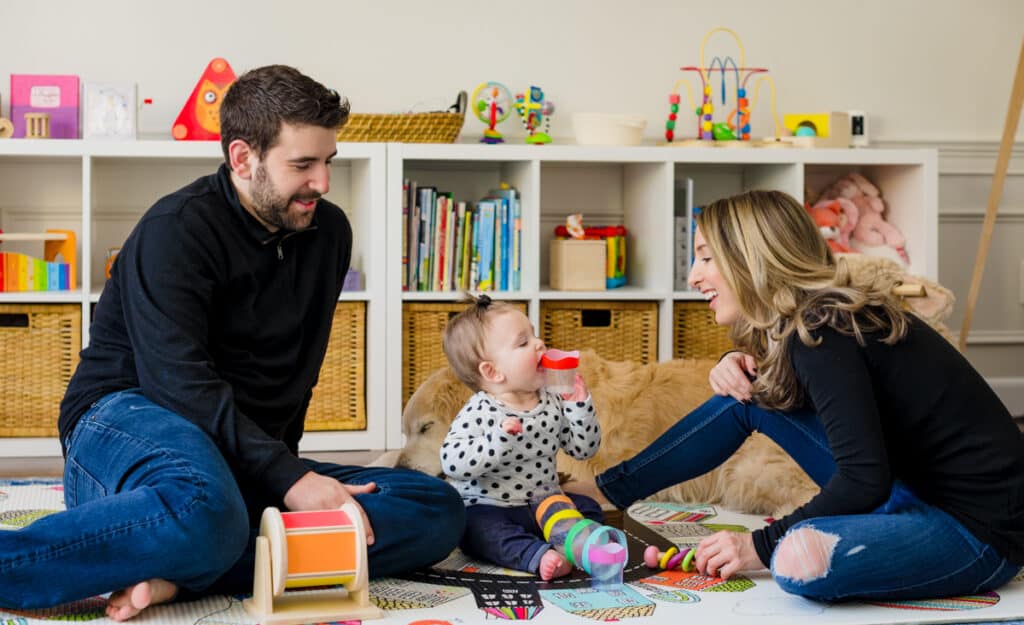
As always, moderation is key. NO, I don’t think you need to throw out every toy in your house. YES, we do have plastic toys — and not all of the toys we have are perfect. Still, it never hurts to step back and think a bit harder about the products we’re bringing into our homes… especially the products that our littles are coming into regular contact with (and putting in their mouths!)
Why Non-Toxic Baby Toys Are Important
Let’s start with some food for thought…
Children — especially babies! — put a lot more than food into their mouths. If you’ve spent time around an infant or a toddler, you know this all too well. According to Healthline, there are a few reasons babies put everything in their mouths.
- They use their lips and mouths to explore the world.
- Their taste buds are developing and are always looking for a snack.
- They’re teething.
- They’re self-soothing.
- They’re building up their immune systems.
Just as we’re watching our kiddos to make sure they don’t choke as they stick things in their mouths, we need to be watching what those things are. Are they safe? What kind of damage have they been known to cause?
As concerned grown-ups, there are obviously toxic, unsafe products that many of us have already likely locked away to avoid just this kind of scenario. I’d venture to guess that you started doing this as soon as your baby became mobile!
But here’s the thing: there are toxins lurking in other items — not just the obvious ones that were the first on your list to be locked behind cabinet doors or set on high shelves. In fact, even some products that are actually intended for babies and children are not entirely safe. You may be wondering why these things aren’t regulated… and me too. It’s beyond frustrating! But we can be informed and make the right choices, for our families, when we can!
Today, I’m talking about toys.

Why Safe Baby Toys Matter
Unfortunately, many common toy brands are made with toxic chemicals and heavy metals. Here are a few common culprits used in the industry that you should try to avoid when possible:
- Bisphenols BPA + BPS
- Formaldehyde
- PVC
- Lead and other heavy metals
- VOCs
- Pesticides
I know this sounds a little scary, but please don’t panic!
Let’s all take a deep breath and think this through together.
FIrst of all, I want to be clear — as I mentioned above, we do have some plastic toys in our house. Skylar’s toy box is far from perfect. And I wouldn’t expect your homes to be stocked with nothing but toys that are guaranteed to be non-toxic. We’re all just doing the best we can!
No one is perfect, and this post is not intended to make you feel like you should be. Instead, I want to talk about ways we can all be extra conscious as we shop for the special little ones in our lives. (Just like I did a few years ago in this post about cleaner art supplies!)
Feeling a little better? Okay. Let’s keep going.
I’m sure you’re not necessarily looking for any of the specific chemicals listed above when you’re shopping for toys. Plus, unlike food manufacturers, toy manufacturers are not required to list the ingredients they use on any sort of label. The industry is highly unregulated. Don’t feel silly if you haven’t come across this information before!
Your best bet is to be on the lookout for signs that a toy you’re considering purchasing contains chemicals or heavy metals.

Here are a few things to pay attention to and avoid:
- Plastic. When possible, avoid plastic toys, especially of the cheap, single-use variety. Toys made from recycled milk jugs or bioplastic are an exception.
- Polyurethane foam. Toys made with this almost always contain flame retardant chemicals.
- Smell. If a toy smells like plastic, it’s probably made with PVC/vinyl, which is known to cause cancer. If it smells fruity, it may contain phthalates, which have been proven to disrupt the endocrine system.
- “BPA-Free.” This label on a toy doesn’t necessarily put you in the clear. The toy might still contain chemicals that are very similar to BPA, causing similar issues for the endocrine system.
If you’re shopping for toys online, you can do a little research. And hey, if you can, why not support a local toy shop and pick them out in-person? That way, you can keep your eyes peeled for these red flags and purchase accordingly!
Non-Toxic Baby Toy Brands We Love
If in-person shopping isn’t an option — or you’re simply looking for some safe brands that you can feel good about — here are a few of the favorites in my house! This is by no means an exhaustive list, but instead a list of companies making safer toys that myself and my team have loved!
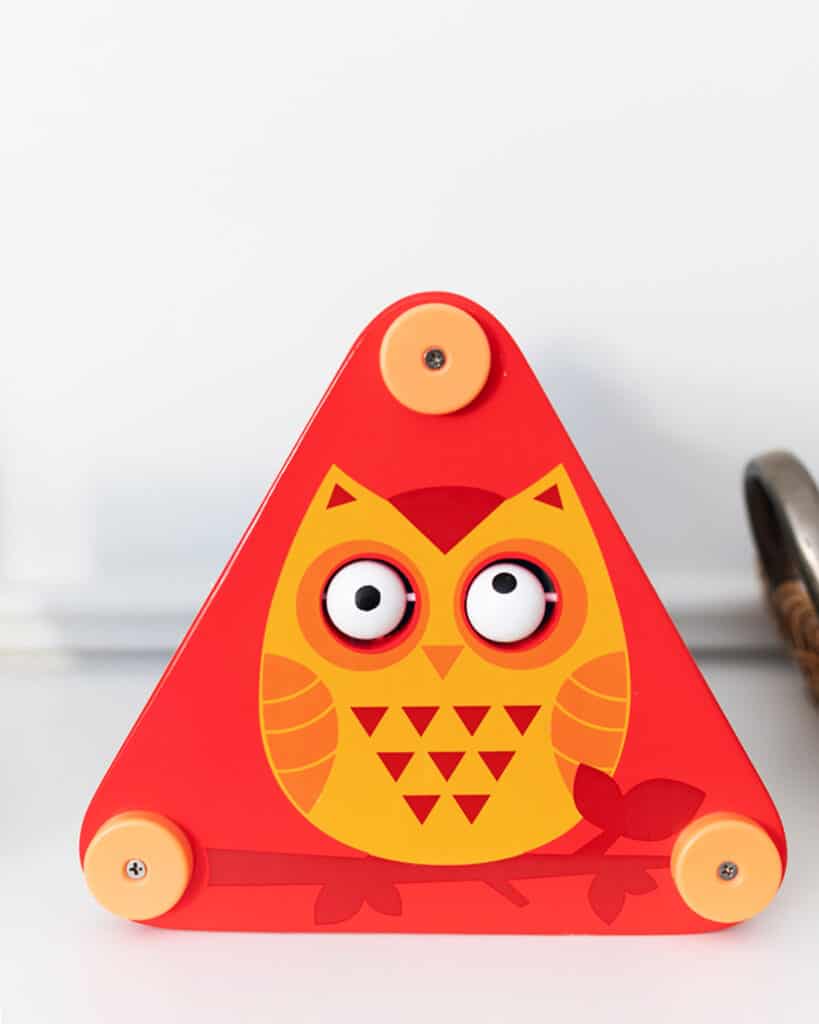
You may already know this from my Instagram, but I’m personally a big fan of this subscription box from Lovevery. All of the toys supplied in the boxes are made from sustainably-sourced wood and 100% organic cotton and are made to meet or exceed global safety standards. The company even guarantees carbon-neutral shipping, which is a great bonus. We’ve gotten their boxes since box 1 (month 1) and continue to get them and love them!
What to Look for When Shopping for Non-Toxic Baby Toys
- Natural wooden toys (bonus points for sustainable sourcing!)
- Soft cloth and plush toys, ideally organic and made without pesticides and toxic dyes
- Items finished with water-based, non-toxic paints and dyes
- Low or No VOC paint finishes
- Natural rubber
How to Navigate Receiving Potentially Unsafe Toys as Gifts
One of the most challenging things about sticking to non-toxic baby toys is that when it comes to kids, there’s often a lot of gifting involved. Your friends and family members love your baby and want to show it, sometimes with presents. It’s super generous of them!
Generosity aside, though, I understand that it can be frustrating to accept gifts of potentially unsafe toys when you’re doing your best to be conscious of the products coming into your home. Here are a few ideas that my team members and I have used to manage this dicey situation that you might consider trying out…
- Let’s start with the obvious. You can let kids be kids and enjoy those toys, even if they may not be ones you’d necessarily buy.
- Next time your child has a birthday or other special occasion, request books or maybe even ask loved ones to make a donation in your child’s name in lieu of gifts! If there aren’t toys coming into your house, you’ve already gotten ahead of the problem of potentially toxic toys.
- If your baby or toddler has received toys that you’re not 100% sure are safe, you can put them away to be introduced later on, when you’re less worried about them putting things in their mouth.
- Designate the toys when you can watch your child very closely to ensure that they’re not putting them in their mouth and when you can play together. This will make those toys feel extra special, too!
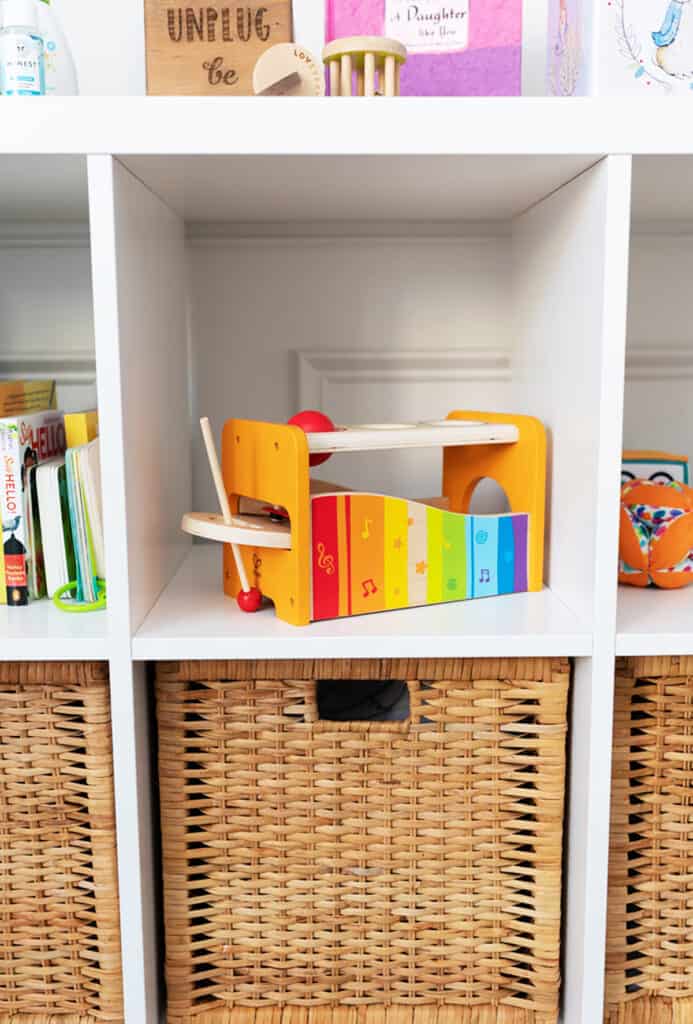
As I mentioned earlier, no one’s perfect! I’m certainly not. Like every other parent out there, I’m simply trying to make the best decisions possible for my baby and my family as a whole! To me, reducing toxin exposure — especially since it’s all around us in ways we cannot always control— is always going to be a net-positive, particularly for little ones!
It’s so much easier to do this when you have more information at your fingertips — and I hope you feel like you have that after reading this post. Happy playtime!
If you like this article, check out some of our other non-toxic guides:
- Safer Art Supplies
- I Switched My Cleaning Products For This
- Why I Ditched Dryer Sheets
- Our Picks For Safer Cookware
